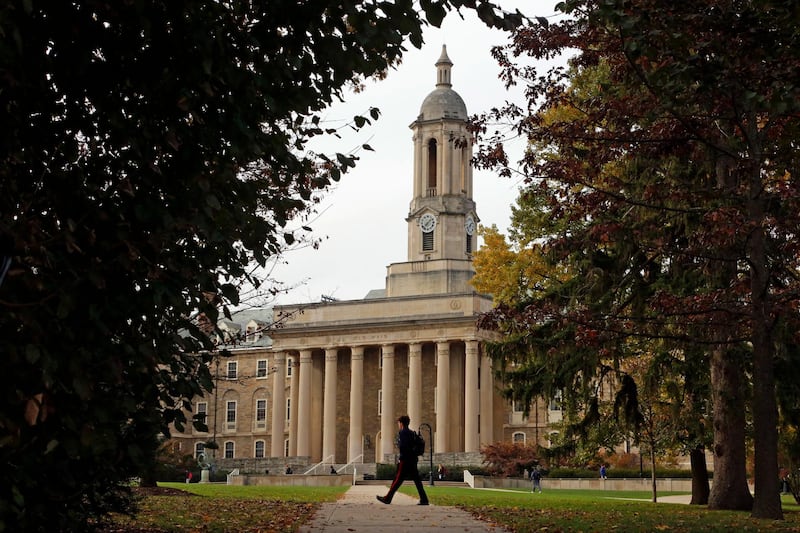The number of students from the Middle East studying in a college or university in the United States dropped by 8.4 per cent, according to the latest data from the Institute of International Education (IIE).
During the academic year 2016-2017, there were 92,470 students from the Middle East enrolled in a college or university in the US, down from 100,926 in 2015-2016, according to the Open Doors Report on International Educational Exchange published in November by the IIE with support from the US Department of State Bureau of Educational and Cultural Affairs.
The decline is the first to be recorded for this region in more than 10 years, according to the IIE, which has been collecting statistical data on international students in US campuses for nearly a century.
Dean Hoke, co-founder of Edu Alliance, a higher education consultancy firm founded in Abu Dhabi and with an office in the US, said a combination of factors have contributed to the decreasing number of students.
“Certainly the social and political climate has created a chilling effect on Middle East students coming to the United States to study,” said Mr Hoke, adding that the fall in oil prices has also cut into foreign education budgets in countries like Saudi Arabia, which sends the fourth largest number of students to the United States.
Since 2006, the number of students from the Middle East studying in the US had been steadily rising, with most years recording double-digit, year-over-year growth. Following the launch of Saudi Arabia’s King Abdullah Scholarship Program (KASP) in 2005 – which covered the full education, travel and living expenses of thousands of Saudis annually to study abroad – the population of Middle Eastern post-secondary students in the US quickly multiplied from 22,321 in 2006 to a peak of 100,926 in 2015.
_______________
Read more:
[ Canadian universities see spike in applicants following US travel ban ]
[ Immigration puts Middle Eastern students off studying in US ]
[ Universities can grow overseas student population by selling whole UAE package: experts ]
_______________
But in 2016, the Saudi government announced new KASP eligibility criteria for prospective students wishing to study abroad, according to Reuters. The new rules were proposed by a council that is “reining in state spending and seeking greater efficiency in many areas to narrow a huge state budget deficit caused by low oil prices.”
“The tighter requirements look likely to bring down government spending on a program many young Saudis have come to view as an entitlement,” according to Reuters. “For example, it said students applying for funding after enrolling in institutions abroad must be in one of the world’s top 50 academic programs in their field or top 100 universities, as determined by the Saudi Ministry of Education. They must also maintain minimum grade point averages.”
Saudi Arabia experienced the biggest year-over-year decline among the Middle Eastern countries in 2016-2017 academic year, according to IIE. There were 52,611 Saudis studying in the US in 2016-2017, a drop of 14.2 per cent compared to the year before. In its report, the IIE attributed the decline in part to a “scaling back” of the KASP scholarship program.
A 2016 trade report published by the US Department of Commerce forecasts that the number of Saudi post-secondary students in the US will fall below 50,000 by the year 2020.
“Due to the recent decline in oil prices and revenues, the flow of students from Saudi Arabia studying in the United States could decline in the near future,” according to the International Trade Administration report. “Additionally, Saudi Arabia is investing considerable resources into its domestic education infrastructure, particularly at the post -secondary level, which may encourage more Saudis to study domestically.”
The UAE, Iraq, Jordan, Palestine and Qatar also had fewer students studying in post-secondary institutions in the US in 2016-2017.
For the UAE, the decline is also the first in 10 years. The number of Emiratis studying in the US had been climbing annually since the 2006-07 academic year. The UAE went from sending 885 students that year to reaching a peak of 2,920 students in 2015-16. That number decreased by 167 students, or 5.7 per cent, last academic year.
Experts said enrolment of international students from the Middle East studying in the United States may decrease further, due to the growth of online education, improved higher education opportunities at home, increased competition among English-speaking countries and a festering anti-Muslim bias under US President Donald Trump.

“We did ask institutions about their concerns and we did hear from some institutions that they are concerned about both the social and political climate in the US this year, and they are particularly concerned about the students from the Middle East, but also students from Asia,” said Rajika Bhandari, IIE’s head of research, policy and practice. “Institutions are worried that students should continue to see the US as being both competitive and welcoming.”
While the number of overall international students to the US increased by 3 per cent to 1.08 million, the number of new undergraduate enrolments declined for the first time in 12 years.
Mr Hoke said US colleges and universities need to revise their international strategic recruitment plans in light of these new social, economic and political challenges.
“Middle East students and their parents need to know the university and the community they reside is a safe and welcoming environment, the quality of education is of high value and worth the investment,” said Mr Hoke. “Universities big and small need to re-enforce the concept to their community at large that Middle Eastern students mean more than just revenue.”






